Global Market Comments
October 25, 2023
Fiat Lux
Featured Trade:
(AN EVENING WITH THE CHINESE INTELLIGENCE SERVICE),
(FXI), (CYB), (BIDU), (CHL), (BYDDF), (CHA)

Global Market Comments
October 25, 2023
Fiat Lux
Featured Trade:
(AN EVENING WITH THE CHINESE INTELLIGENCE SERVICE),
(FXI), (CYB), (BIDU), (CHL), (BYDDF), (CHA)

The current chip war with China brings back memories of my five-decade-long relationship with the People’s Republic of China.
I normally avoid the diplomatic circuit, as the few non-committal comments and soggy appetizers I get aren’t worth the investment of time.
But I jumped at the chance to celebrate the 62nd anniversary of the founding of the People’s Republic of China with San Francisco Consul General Gao Zhansheng.
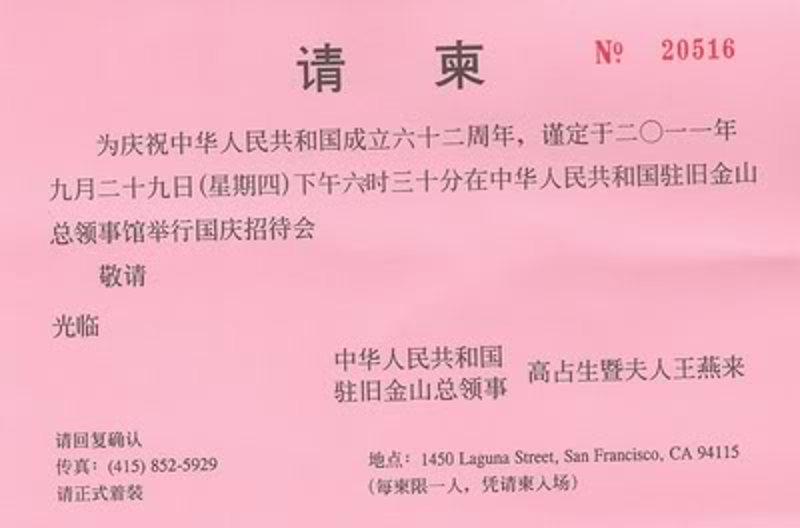
Happy Birthday, China!
When I casually mention that I survived the Cultural Revolution and interviewed major political figures like Premier Deng Xiaoping, who launched the Middle Kingdom into the modern era, and his predecessor, Zhou Enlai, modern-day Chinese are enthralled. It’s like going to a Fourth of July party and letting drop that I palled around with Thomas Jefferson and Benjamin Franklin.
Five minutes into the great hall, I ran into my old friend Wen, who started out her career with the Chinese Intelligence Service and had made the jump to the Foreign Ministry, as all their best people did. She was passing through town with a visiting trade mission.
When I was touring China in the seventies as a guest of the Bank of China, Wen was assigned as my guide and translator, and we kept in touch over the years. I was assigned a bodyguard who doubled as the driver of a tank-like Russian sedan.
The Cultural Revolution was on, and while the major cities were safe, we ran the risk of running into a renegade band of xenophobic Red Guards, with potentially fatal consequences.
I asked Wen when China was going to float the Yuan. She explained that this is something China knew it had to do, but it wasn’t going to be rushed into by some opportunistic foreign politicians.
If it moves too soon, millions will lose jobs, creating political instability, something the central government wants to avoid at all costs. Many of the largest scale employers were only marginally profitable, and a hike in the renminbi of only a few percent would force them out of business. I pointed out that that was exactly what was happening in the US.
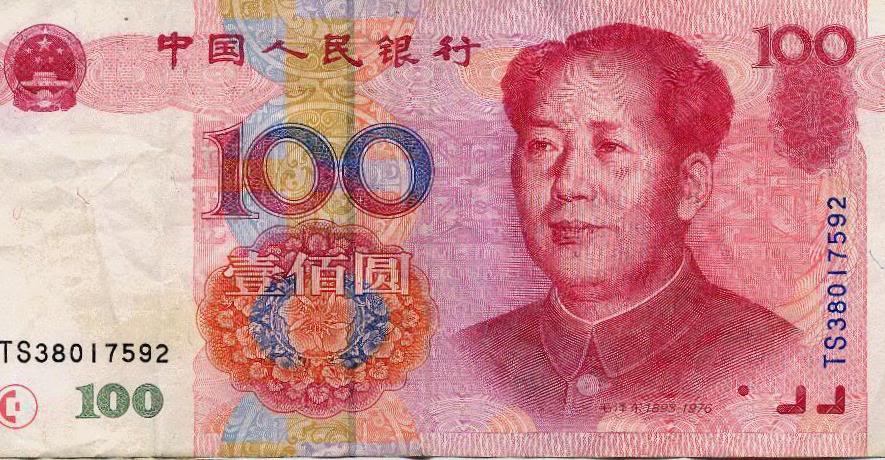
Worth More Than Meets the Eye
I warned that if the Middle Kingdom waited too long, Washington would force them into an appreciation through punitive import duties and anti-dumping actions, as we did with Japan 50 years ago.
It was Nixon’s surprise ban on textile imports in 1971 that finally persuaded Japan to float the yen, then at ¥360. If that didn’t convince the Chinese, then imported inflation would. The longer China delays, the bigger the pop when their currency is finally set free.
Wen then went on the offensive, claiming that Chinese workers were being exploited by American companies keeping wages low. The product that China made for $1, and sold to the US for $2, was then sold by Walmart (WMT) for $20, which kept all the profits.
She pointed out that the Walton family had a combined net worth of $238 billion, more than the total worth of the lower 40% of the US population. This could never happen in China.
I told her that by selling the product at $20, Walmart wiped out another US company that used to make that product domestically and sold it for $40, throwing those people out of work.
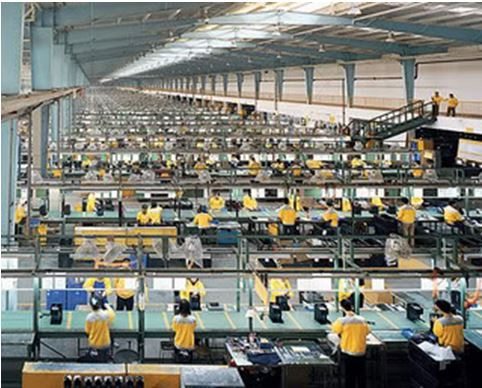
Modern Times in China
I then asked Wen what were her country’s plans for its massive foreign exchange reserves, now at $3.2 trillion. She agreed that this was a problem because the reserves were pouring in so fast at an embarrassingly high rate of $10 billion a month and that it was the most rapid accumulation of wealth in history (click here for the data). In any case, reserves have been falling for the past year from a peak of $4.1 trillion.
While it had more than enough Treasury bonds, any attempt to sell might cause their value to collapse and freeze relations with the US. I suggested China should start hedging its gigantic holdings without selling them, or some managers would be facing a firing squad in the future.
China tried to recycle its surpluses by buying foreign companies that produce the natural resources it desperately needs. But takeover attempts were fought tooth and nail as a foreign invasion, or on national security grounds, such as the attempt to buy California’s Unocal in 2005 and Australia’s Oz Minerals in 2012.
It was now using a strategy of buying low profile minority stakes in foreign resource companies. China took a big stake in the Petrobras (PBR) secondary equity offering, which didn’t work out so well, as the company is now facing bankruptcy.
I asked her about the real estate bubble in China that was causing so many foreign investors to lose sleep. She said it was true that sales were slow at some luxury buildings in Beijing and Shanghai, but the great majority of developments were aimed at working people and were filling up as soon as they came on the market.
The 40% down payment demanded by the People’s Bank of China headed off the rampant speculation that brought the American financial system down. Buyers of second homes were required to pay entirely in cash.
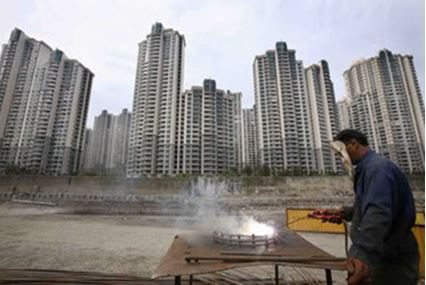
Rooms With Views
Wen then complained about the aggressive military stance the US was taking towards China, ringing it in with the Seventh Fleet. Holding a knife so close to the country’s foreign supply line jugular vein made them nervous.
China was basically indefensible. All it would take was the sinking of a few grain ships, and 50 million would starve within a year.
Wen told me there is a school of thought in Beijing that as the country’s economic power grows- it passed Japan to become second in GDP in 2010– that the US will increasingly perceive it as a military threat. This would lead America to mete out the same hostile treatment to China as it has done to Russia since the Ukraine War began.

Walking Softly, But Carrying a Big Stick
I assured her that the Seventh Fleet was there to watch and listen, but to do nothing. It was really in a position to provide a security blanket for allies, like Japan and South Korea, but nothing more. China wasn’t engaging in the belligerent behavior that Russia was at the height of the Cold War, like blockading Berlin, basing missiles in Cuba, stationing fast attack nuclear submarines off our coasts, and invading Afghanistan.
I argued that if China truly has no expansionary intentions, the more we know about you, the better. It is always prudent for a potential adversary to conclude you are not a threat, and that no action is needed.
The more you help the US do that, the better. China is decades behind the US in military technology, and you really have nothing we want. Little more than 200 nuclear weapons without an ICBM or submarine delivery systems were hardly viewed as a major threat.
Wen seemed perturbed that I was aware of her country’s nuclear stockpiles, and asked how I knew this. I said that former CIA director Leon Panetta told me. She said “Oh.” I asked what was that test downing of a satellite in space about, anyway. She didn’t answer.
Looking at the world for the next 30 years, who is the Pentagon going to model and war game against, but China, with its 2.5 million-man army?
Wen countered that the People’s Liberation Army was purely a defensive force. With a 12,000-mile land border, an 11,000-mile coastline, and dubious neighbors like Russia, Iran, and India, they have no other choice. Its ability to project force over great distances, as the US can, is virtually nonexistent.
Its 1979 invasion of Vietnam was about reclaiming ten miles of lost territory. China got involved in Korea only after General Douglas MacArthur threatened to rain atomic bombs on the mainland, losing 2 million men, including Chairman Mao’s son. China could have done a lot more in the Vietnam War, but didn’t, limiting its participation to a supply, logistical, and advisory role.
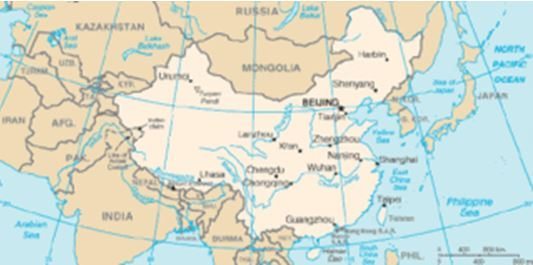
That’s a Lot of Border to Defend
I then warned that if you really are worried about the Pentagon, you should stop hacking into our computers. She replied that the US started this by emptying out Chinese mainframes many times, and they were only responding in kind.
I said yes, but that China was targeting private companies, like Google (GOOG), Microsoft (MSFT), and Oracle (ORCL) that without military-grade software, were unable to defend themselves. The Chinese agencies involved then used the data to their own commercial advantage.

What Did You Say the Password Was Again?
By the time Wen married, China had already adopted its one-child policy. As much as she wanted more children, she understood the government’s need to adopt such a drastic policy. Without it, the population today would be 1.8 billion, not 1.2 billion, and all of the money that went into buying capital goods would have been spent on food imports instead.
The country would have stagnated at its 1980 per capita income of $100/year. There would have been no Chinese economic miracle. She was very proud of her one son, who was a software engineer at Microsoft (MSFT) in Beijing.
Her husband, a mid-level official at the Ministry of Commerce, fared less well, dying of lung cancer at a relatively early age. The US and Europe had exported their worst polluting industries to China to take advantage of lax environmental controls, turning the air in Beijing into a choking haze.
Sometimes her son would come home from school coughing and wheezing so badly that he couldn’t play outside. The two packs of cigarettes a day her husband smoked didn’t help either.

Imported From the USA
I asked if she recalled our first trip together and a dark cloud came over her face. We were touring a section of Fuzhou when three policemen marched up. They started shouting at Wen that we were in a restricted section of the city where foreigners were not allowed. They started mercilessly beating her with clubs.
I was about to intercede when my late wife, Kyoko, let go with a blood-curdling tirade in Japanese that froze them in their tracks. I saw from the fear in their faces that she had ignited their wartime fear of Japanese authority and the dreaded Kempeitai, or secret police, and they beat a hasty retreat.
To this day, I’m not exactly sure what Kyoko said. We took Wen back to our hotel room and bandaged her up, putting ice on the giant goose egg on her head. When I left, I gave her my copy of HG Well’s A Short History of the World, which she treasured, as the book was then banned in China.
Wen mentioned that she was approaching the mandatory retirement age of 60, and soon would be leaving the Foreign Service. I suggested she move to San Francisco, which offered a thriving Chinese community. She laughed. No matter how much prices had fallen, she could never afford anything here on a Chinese civil servant’s salary.
Wen told me that China was grateful for the billions of dollars that foreigners had poured into her country as a result of my writings. I replied that I was simply trying to show my readers where to make some money, nothing more. It was pure opportunistic self-interest.
One of my early recommendations, Chinese search engine Baidu (BIDU), was up more than tenfold in less than two years. Did she happen to know about any more future Baidu’s? Wen said that she wasn’t that close to the stock market, but that she would get back to me.
I asked Wen if she still had the book I gave her nearly five decades ago. She said it had become a family heirloom and was being passed down through the generations. As she smiled, I noticed the faint scar on her eyebrow from that unpleasantness so long ago.
In view of Wen’s comments, I think you have to pass on investing in China (FXI) for the short term.
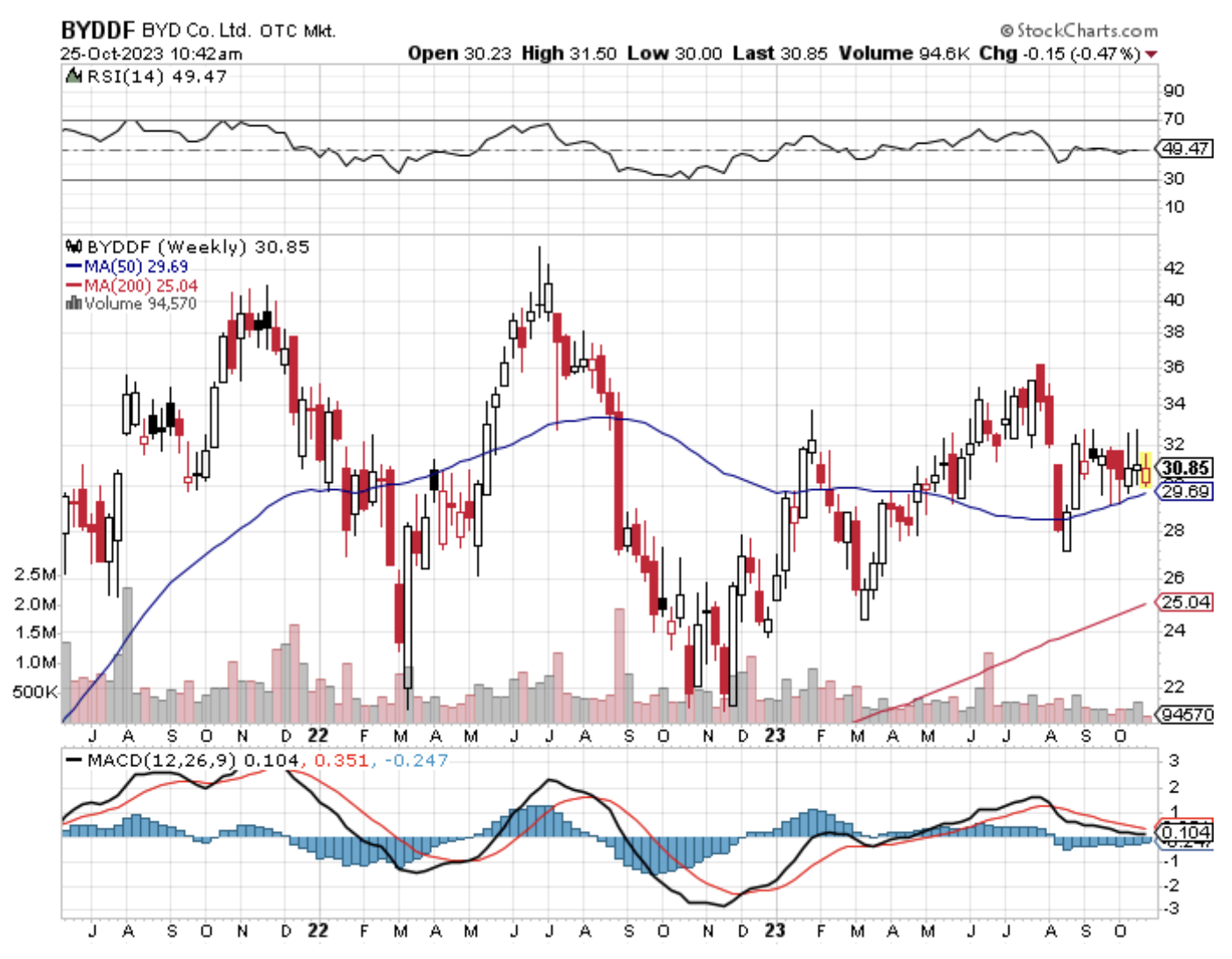
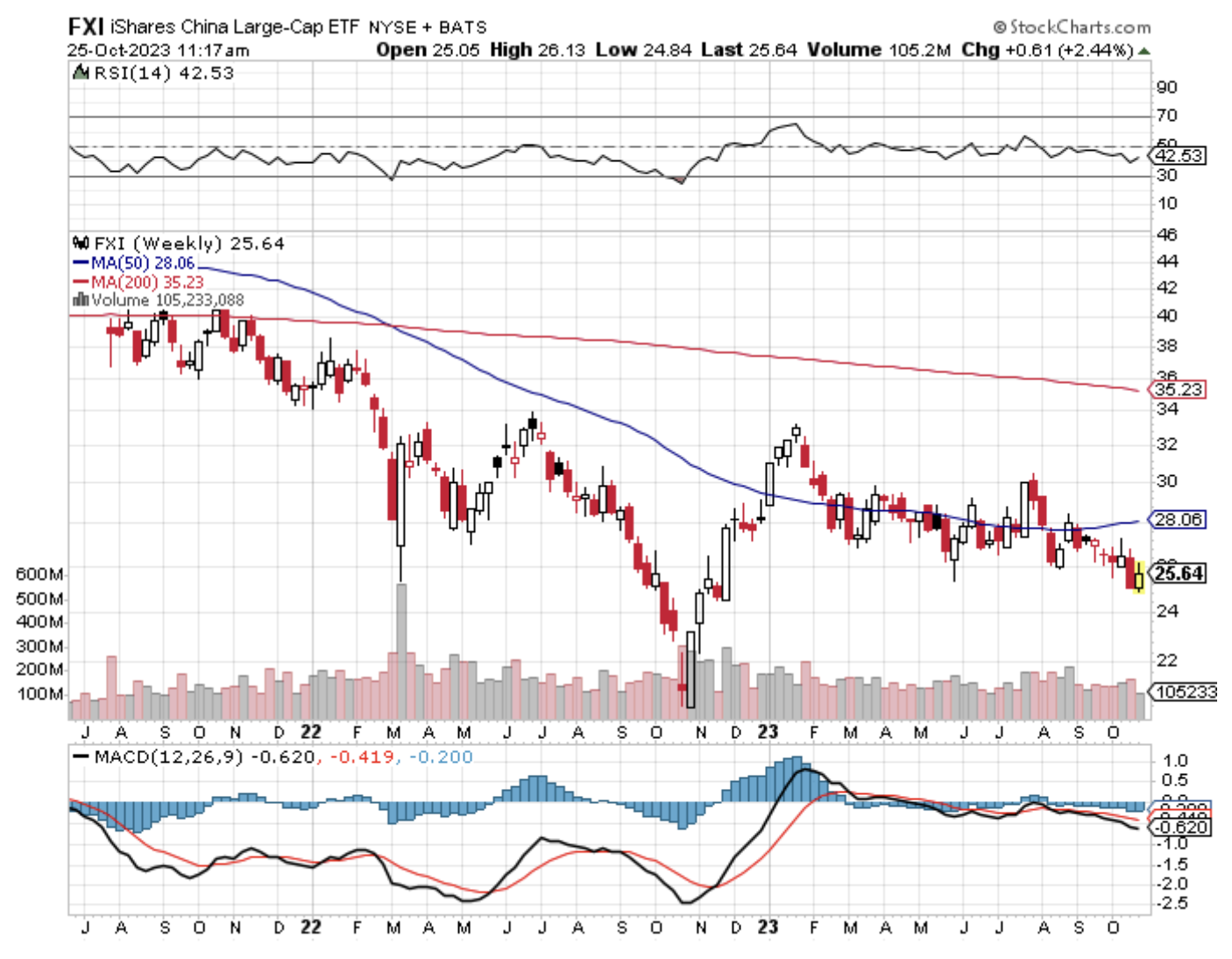
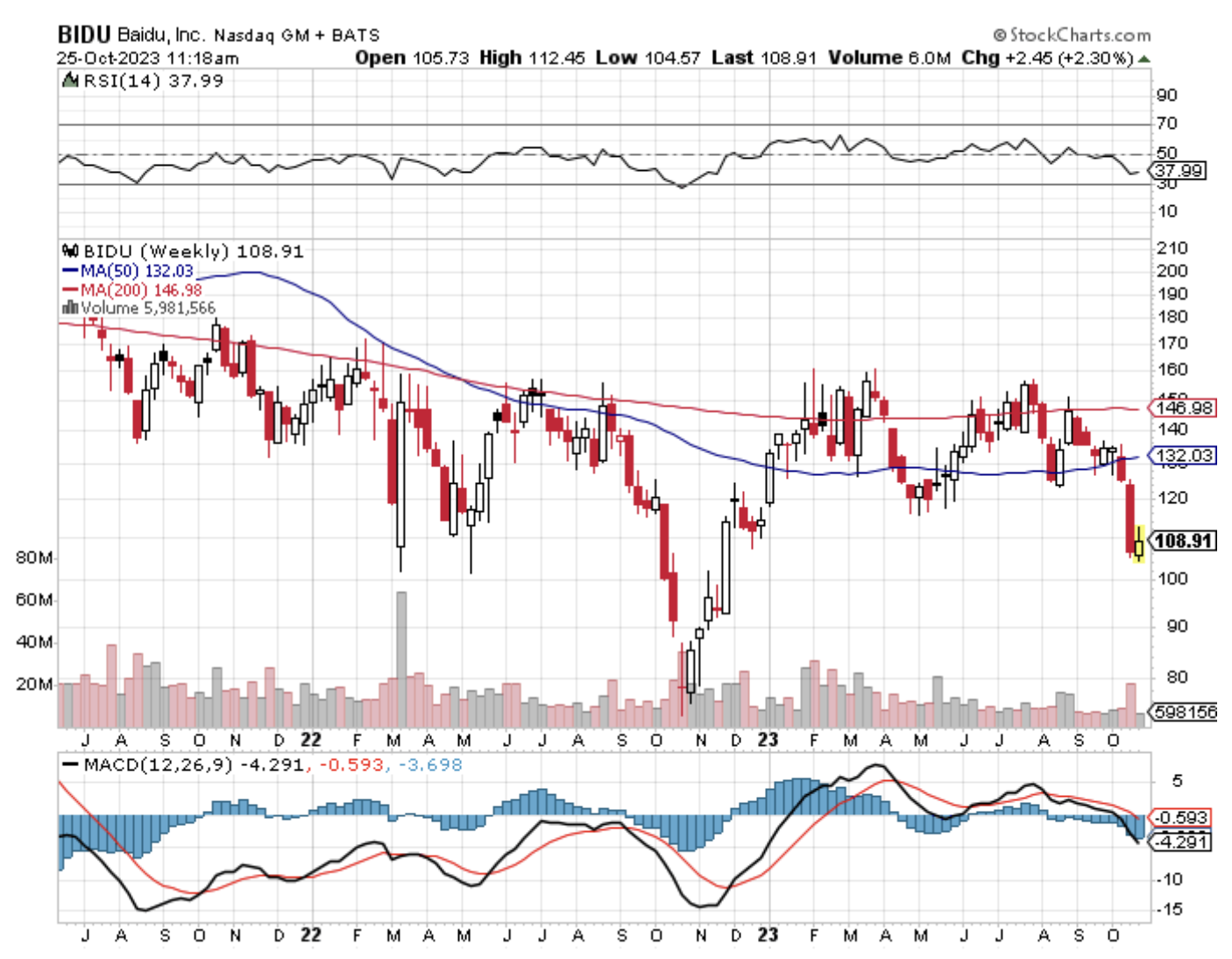
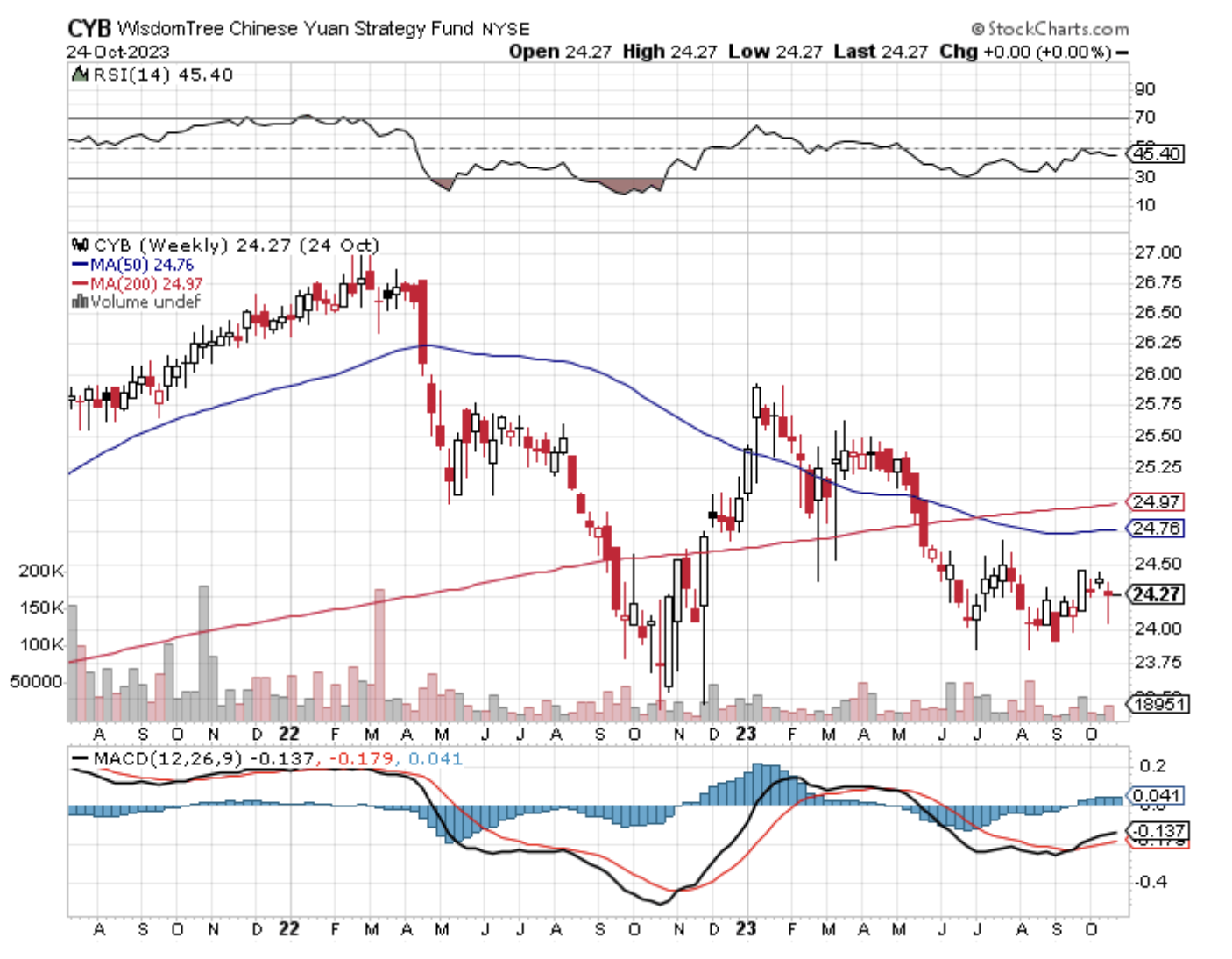
Global Market Comments
May 4, 2018
Fiat Lux
Featured Trade:
(DON'T MISS THE MAY 9 GLOBAL STRATEGY WEBINAR),
(A DAY IN THE LIFE OF THE MAD HEDGE FUND TRADER),
(SPY), (TLT), (TBT), (FXE),(GLD), (GDX), (USO),
(AMLP), (STBX), (NFLX), (DIS), (AAPL), (GM)

Global Market Comments
May 3, 2018
Fiat Lux
Featured Trade:
(STORAGE WARS),
(MSFT), (IBM), (CSCO), (SWCH),
(DON'T BE SHORT CHINA HERE),
($SSEC), (FXI), (CYB), (CHL), (BIDU),

Everyone who has been reading this letter for the past decade (yes, there are quite a few of you), know that I am a fundamentalist first and a technician second.
Of course, you need to use both, as those who mistakenly leave one tool in the bag reliably underperform indexes.
The one-liner here is that I use fundamentals to identify broad, long-term, even epochal trends, and technicals for the short-term timing of my Trade Alerts.
Do both well, and you will prosper mightily.
Strategists often like to cloak themselves in the fundamental or technical mantels alone. But parse their words carefully, and the best fundamentalists talk about support and resistance levels, while the ace technicians refer to the latest economic data points.
The reality is that the best of the best are using both all the time. The differential titles have more to do with marketing purposes than anything else.
Having said all that, you better take a good, hard look at the chart below for the Shanghai Stock Exchange Composite Index ($SSEC). The 2016 low has held and the long-term uptrend lives.
My bet is that it resolves to the upside. All it would be doing then is coming in line with the rest of the global equity markets, including those of many emerging markets.
Since the last top, the earnings multiple of Chinese companies has plunged, from 35 times to a mere 15 times. This means that the 6.5% a year growing economy (China) is trading at a lower multiple than the 2.3% a year growing one (the U.S.). The big question among strategists since 2009 has been how far these valuations would diverge.
If I am right, then you can expect a rally of at least 25% in the Shanghai market soon, and more in peripheral markets, such as Hong Kong (EWH) and in single Chinese names. My bet is that it starts in August, when the current correction ends and we resume the year-end ramp-up.
You should place a laser-like focus on the Chinese Internet sector, so you won't go wrong picking up some Baidu (BIDU) around $180, if you can get it (click here for my original recommendation to buy the stock at $12 nine years ago).
If you are looking for further confirmation of the coming bull move in China across asset classes, please peruse the chart below for copper. The red metal has one of the closest correlations out there with the fate of the Middle Kingdom's economy and stock markets. It appears to be breaking out of a major five-year downtrend as well.
The other nice thing about this scenario is that it provides more fodder for my expectation of another global bull market move in the fall, when you can expect major indexes to tack on another 10% by year-end.
Jim Chanos, watch your back!

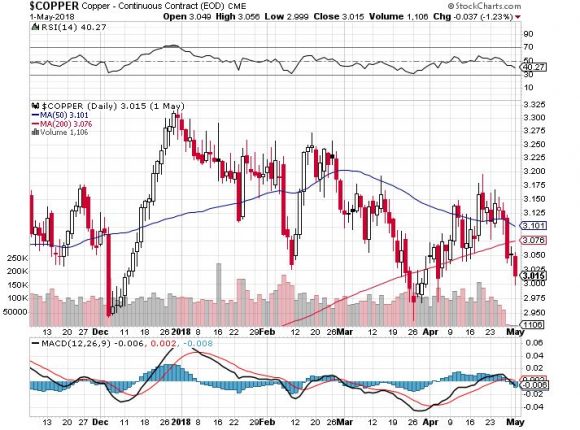
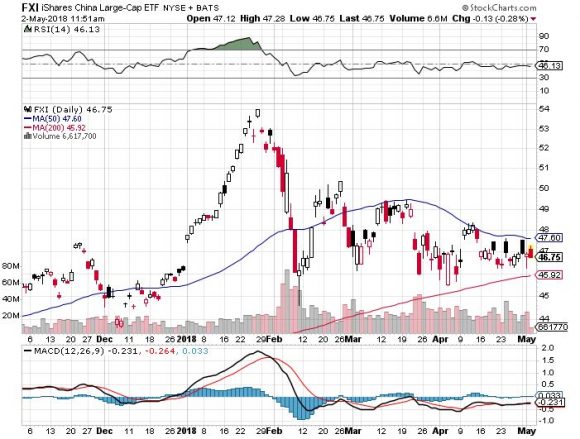
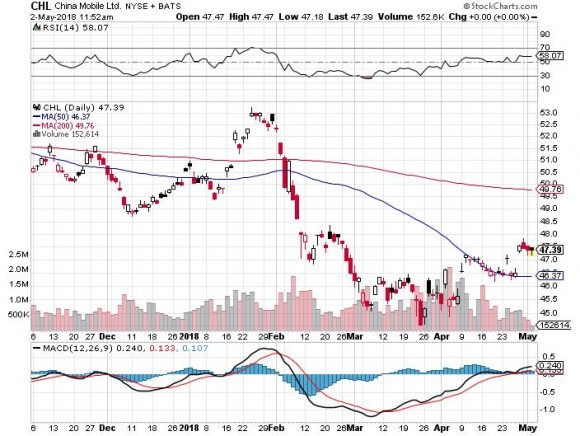
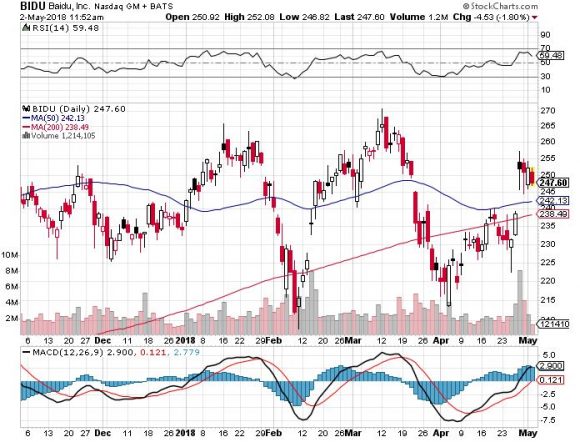
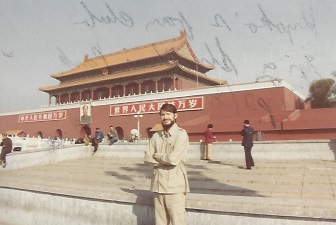
It is the world?s largest company.
It is the planet?s most widely owned stock.
Of the 200 million Americans who possess financial assets, probably all of them own Apple (AAPL), either directly through a trading account, or indirectly though an ETF (it is a massive 11.67% of the PowerShares QQQ), public or private pension fund.
So to say that traders are on pins and needles ahead of the upcoming quarterly earnings report would be an understatement.
A year ago, Apple issued one of the most perfect reports in the history of capitalism.
It blew away even the most optimistic forecasts, announcing earnings per share of $2.33, versus a consensus expectation of $2.16, and $1.75 last quarter.
The firm earned $13.6 billion in profits on $58 billion in gross profits, the largest quarterly profit in world history.
The company sold a staggering 61.2 million iPhones during the three-month period, 4 million more than expected. Insignificant iPad sales dropped from 13.9 to 12.6 million units. MacBooks were in line at 4.6 million units.
No mention was made whatsoever of problems with a strong dollar.? The company now sits on an unbelievable $194 billion in cash, the equivalent of the GDP of a medium sized country.
Most importantly, Apple expanded its share buy back program to $200 billion. The big question now is, will Apple buy another company, or a whole country?
Wow!
Since then the stock has been grinding sideways in the most tedious manner imaginable. It was a classic ?Buy the rumor, sell the news? set up.
Which leads many shareholders to ask if, now that the stock is owned by every taxi driver, elevator operator , and shoe shine boy in the country (now I?m showing my age!), are we headed for another 45% selloff, much like the last time the stock peaked out in 2012?
Certainly, the grounds for concern are out there.
There are now no new blockbuster products coming out until we see the iPhone 7 in September 2016.
There are supply chain worries, as the global manufacturing network is now absolutely mammoth.
Some analysts are nervous about quality control, especially regarding new products like the Apple watch, which should sell an eye popping 30 million units this year.
However, I think this time it?s different.
While you weren?t looking, Apple has turned into a China play. No, they aren?t suddenly eating dim sum with chopsticks at corporate headquarters in Cupertino.
The Middle Kingdom, in short order, has become the firm?s largest grower of its earnings. This is a good thing. Last year saw an 80% growth of sales there. China is expected to become the largest market for Apple products this year.
What?s more, the ballistic growth there is expected to continue. Walk down the street in Shanghai these days, and you are amazed by how many people are speaking or texting into their iPhones, real and fake ones alike.
In fact, they have become the primary means through which people access the Internet there.
No doubt, this is due to Apple?s special relationship there with China Mobile (CHL), which now offers iPhone owners a great deal for their cell phone service. Did I mention that (CHL) has a staggering 750 million customers?
The iWatch is now viewed as the gateway for the sales of as many as 1.2 million future third party developed apps, the number iTunes offers now.
Apple Pay looks to replace Visa and Master Card at some point in the future. Apple TV is still lurking out there in the background.
We?ll learn more about all of this at the next developers conference in San Francisco in June.
All of this leads me to believe that there is far more fundamental support in terms of new products and business lines for the company than we saw during the last cycle.
There is also more distance in the rear view mirror since the passing of Steve Jobs. Successor Tim Cook has since proved himself as a world-class leader.
It turned out the timing for the company to transition from a founder-tyrant to a cutting edge administrator-manager was perfect. You don?t need to hold your breath anymore.
At least the stock market thinks so.
Therefore, I expect to see a $1 trillion market capitalization for Apple sometime in 2018, well up from today?s $602 billion. I think that means you need to use the current dip to load up on the stock.
Those who followed my advice to buy Apple a year ago are now drowning in riches (click here for ?Buy Apple on the Dip?). Since the July, 2013 bottom, the shares have risen by a meteoric 92%. It is the largest company in the world once again.
As a result, I have heard of my readers shopping for second homes on Lake Tahoe, sponsoring NASCAR teams, or buying new Rolex watches for significant others.
I recommended China Mobile (CHL) then as well, the big beneficiary of a new deal with Apple, whose shares have also gone ballistic.
The question of the day is: ?Now what do we do?
You are right to ask the question. The company?s stock is notorious for running up massively into every major product launch, and then giving back a big chunk afterwards.
So while the expected announcement of the iPhone 6 on September 9 is welcomed as producing a major new source of revenue, it could also signal the end of the current run.
Take a look at the long-term charts, and the hair on the back of your neck should stand up. The fanfare for the iPhone 6 will almost exactly come at a potential double top in the stock price. Could we be setting up for the greatest ?buy the rumor, sell the news? of all time?
The last time we visited this territory, which we visited on the launch of the iPhone 5, Apple?s shares plunged a gut churning 45%, prompting some shareholders to dump their iPhones in the trash.
Certainly the problems that caused the rally to fail last time are kicking in once again. The law of large numbers applies once more. Apple?s market capitalization is at $607 billion today. There may not be enough equity investors in the world to push the shares up appreciably from here.
Oh, and because of the recent rapid appreciation, most institutions are now overweight Apple, as they were in September, 2012. The only difference is that Apple accounts for only 3% of the S&P 500, compared to a hefty 5% two years ago.
The shares are now at a 15.5 earnings multiple, up from under 10 at the recent bottom, and 7 if you took out all of the cash. That is still a discount to the main market, as well as most other technology stocks.
The truth is that this is not your father?s Apple.
CEO Tim Cook has shown a much greater respect for investors compared to founder, Steve Jobs, who despised Wall Street with a passion. I know, because I escorted Steve to meet with institutional investors looking at a secondary share issue during the early 1980?s. It was not a happy time for me.
There is a $50 billion stock buyback program in place, which soaked up a ton of shares at the bottom.
We also now have a 2% dividend yield, a mere 37 basis points through ten year Treasury bond today, another idea Jobs poo pooed.
The company is also strategically in a much stronger position than it was in 2012. Apple has a far broader, more attractive, and more advanced product range than it did only 24 months ago. The China Mobile deal has kicked in big time.
There is immense demand for the new larger screen, faster iPhone 6, which will offer consumer untold bells and whistles. Some 50% of the iPhones in existence are 4s?s or older, so upgrades from the installed base will the largest in history.
This will enable it to retake market share from hated rival, Samsung, which moved to a big screen in 2013. This will open the way for an expansion of Apple?s profit margins, possibly by 25% or more.
Samsung?s smart phone strategy all along has been to copy Apple?s patents and milk them for whatever they are worth, before they inevitably lose the next infringement case in court. As I never tire of telling listeners at my speaking engagements and luncheons, you can?t steal your way to the top in technology.
I would expect, at the very least, that the market has to put the double top theory to the test at least once. That alone will prompt a 10% correction, back down to $92.
Then, if we really are still in a bull trend, it will bounce off that number and head to new highs. If it doesn?t, then it?s game over until the run up to the next big product launch. The iPhone 7?
So the clever thing to do here has to be to do a buy write and sell short Apple September, 2014 $105 calls against you existing stock position.
At this moment, you can get 96 cents for them, with September 19 expiration. If you are braver still, you can go out another month and take in $2.01 for the October 17, 2014 calls. Don?t go farther out than that, or you might miss the yearend rally.
That way, if the stock keeps rising, you will sell your shares out at the higher price of $105. If it falls, your average cost declines by 96 cents, or $2.01. Either way, it is a win-win.
Isn?t that what you pay me for?
 Meet Your New iPhone
Meet Your New iPhoneHedge fund titan, Jim Chanos, is well known for his extremely bearish views on China. He says that the cracks are spreading on the fa?ade, real estate sales are falling, and that the economic engine is starting to sputter.
This will be bad news for the rest of us, as China imports 50%-80% of the world?s commodities. Commodity exporting countries will be especially hard hit, like Canada, Australia, and parts of the US. Modern China has only seen a bull market, and he doubts their ability to manage a true crisis.
There is a widespread misperception that the government will step in and provide any bailouts that will be needed. The domestic Chinese banking system has in fact already been bailed out two times. The harsh reality is that while Chinese companies are selling billions of dollars? worth of new stock issues in the US through IPO?s, a privileged elite is getting their money out of the country as rapidly as they can.
Jim says that he already has short positions in the Middle Kingdom that are profitable. There is no way that even a wrinkle in a market of this size is without global implications, and on that point Jim is right.
However, I think that Jim, who confesses to having never visited China, is missing the broader long-term picture here. China has literally been building a Rome a day, the ancient kind, and the modern size every two weeks. In a year, it builds the equivalent of the entire housing stock of Spain, and in 15 years the equivalent for all of Europe.
While a lot of apartment buildings have been constructed, the country is rapidly creating the middle class to fill them. Even allowing for a pull back from its past blistering 11% per annum GDP growth rate to only 7.7%, urban disposable income per person is expected to grow by 2.5 times to $7,500 by 2020.
Over the same time frame, some 160 million are expected to move from the hinterlands to urban areas. Rising standard of livings mean that residential floor space per person will jump from 270 square feet to 369 square feet, still tiny by Western standards. That is a lot of housing demand.
China has already taken steps to head off a housing crisis, unlike the US. Many banks are now demanding cash deposits of 40%, well over the official requirement of 30%. The government is in effect forcing the banks to deleverage before hard times hit. Too bad they didn?t think of that here.
I think China still has several good years ahead of it, and I am going to pile into the stock ETF (FXI) and the Yuan ETF (CYB) as soon as the current bout of malaise selling exhausts itself. The Country?s real challenge arises when its demographic pyramid starts to invert in about five years, the result of a then 35 year old ?one child? policy, when too many single children have to start supporting two retiring parents.
 China: Not Enough Demand?
China: Not Enough Demand?The Chinese government has announced the most revolutionary changes to its economy in nearly four decades. The implications for global stock markets are hugely positive, and until now, under appreciated. The Middle Kingdom?s state controlled media, never prone to hyperbole, are calling it ?a new historical starting point.?
Chinese stocks have rocketed since word of the broad ranging reforms leaked out last week, and appear to have much more to go. This brings to an end the 3 ? year Chinese growth recession, which saw GDP growth rates shrink from a white hot 13% annual rate, down to a more modest 7%. Until last week, Chinese capital markets were neglected, ignored, and left stranded on a back burner.
This is great news for all of us.
The sea of change promised by the events in the Middle Kingdom barely caught notice in the West, where investors were transfixed by the never ending rise of US equities and other risk assets. But my friends at the senior levels of the Chinese government have been gushing about the great things to come. They compare it to the 1978 revolution, when the ?Gang of Four? was thrown out, and Deng Xiaoping was named premier.
Some 35 years of wildly successful modernization, westernization, and capitalization followed. Chinese per capita incomes skyrocketed, from $100 to $6,000 today. The current round of liberalizations could eventually bring Chinese standards of living to American levels. Give it another 35 years.
Of course, reading the statement issued by the 370 senior party members of the third plenum of the 18th Central Committee, you get no clue of the brave new world they promise. These are always written in obscure code words whose meaning can only be deciphered by tracking nuances, changes, and references over decades. I have been doing this since the early seventies, when Mao Zedong was calling the shots, longer than most Chinese. It was a lot harder then, or am I simply getting wiser in my old age?
The goal of the reforms is to move China from its current emerging status towards middle class. The one child policy was abandoned, which has cut the country?s population growth by 400 million over the last 30 years. This should add back in 400 million in population growth over the next 35 years. Not to do so would risk labor shortages looming in the 2020?s, and the runaway wage inflation that invariably follows.
Internal passports that restricted population movements were abolished. Private property rights are receiving a boost. The economy will become more market oriented. The Chinese gulag that imprisoned tens of thousands was sent to the dustbin of history. The strengthening of the country?s social safety net will free up domestic Chinese savings, which now at 30%, are among the highest in the world. This will bring a surge in consumer spending.
Financial reforms are expected to follow soon. These include a more aggressive path towards a free float of the Chinese Yuan, known locally as the ?renminbi,? or ?people?s currency.? The breadth and depth of domestically traded debt instruments will be greatly expanded. You can expect far more active investment of the country?s nearly $4 trillion foreign exchange hoard abroad, especially in trophy assets in safe havens like the US and the UK. They are already soaking up commercial property loans by the billions here in the San Francisco Bay area.
This will accelerate the evolution of the Chinese economy from an export oriented consuming one to one that is more oriented towards domestic consumption. This is big.
The net net of all this will be to enhance the productivity and profitability of Chinese companies. That is what the Chinese stock markets have been screaming at us since last week.
The prospects for the world economy have been much improved by this second Chinese modernization. Rising Chinese standards of living will produce hundreds of millions of new consumers of American and European goods. Emerging markets (EEM), many of which are indirect China plays, do pretty well in the new paradigm as well. All in all, this should add many percentage points of growth to the world economy in coming decades.
It certainly makes my own forecast of a global synchronized recovery 2014 look good as well. As for stock markets everywhere, think higher, and for longer. ?RISK ON? is ?ON.?
The no brainer here is to buy the iShares FTSE China 25 Index Fund ETF (FXI), which has to rise by 63% just to match its 2007 high. The Chinese economy has more than doubled in size since then, making today?s (FXI) level relatively much cheaper. During this time, Chinese earnings multiples have gone from a huge premium to US ones to a large discount, making them a great rotation play.
If you want to sleep at night, buy the Hong Kong ETF (EWH), where accounting and disclosure standards are on par with those of England, a legacy from its colonial days. You can expect to Chinese Yuan ETF (CYB) to continue its northward market, as I have been predicting for the past four years.
You can also go into single stock plays, like China Mobile (CHL), the world?s largest phone company. Something tells me there are a lot of new customers and upgrades in its future.
Looks like there is going to be a lot more dim sum in my future.
 ?To Get Rich is Glorious?
?To Get Rich is Glorious?Buy the rumor, sell the news. That was again the lesson of yesterday?s new product launch, where Apple (AAPL) rolled out their new premium 5s and low-end 5c iPhones. So many commentators heaped such abuse on the company in the run up to the release that today?s weakness was a sure thing.
Failure to announce a deal with China Mobile (CHL) in Beijing last night was the immediate reason for today?s $30 plunge, which prompted several houses to downgrade the stock. It was a classic ?closing of the door after the horses have bolted? moment. As with time immemorial, your broker is asking you to buy high and sell low, delivering to you a perfect money destruction machine.
However, this time, there is far more than meets the eye. China Mobile wasn?t the barrier to greater access to gargantuan 700 million mobile users. It was compatibility with China?s unique 3G TD-SCMA networks. The new plastic? $99 iPhone 5c bridges that gap.
Chinese customers can now buy the iPhone 5c retail unsubsidized, as are 70% of the mobile phones in the Middle Kingdom, and use them on the local China Mobile network for the first time. Analysts expect this will enable Apple to pick up 6% of China?s mobile market share immediately, much at the expense of rival Samsung. The full China Mobile subsidy package, which the uninformed and non-technical have been looking for, could still be years off, but has been rendered irrelevant by Apple CEO, Tim Cooks, move.
The reality is that Apple?s unit sales will remain stable, or even grow modestly, with no new products whatsoever, its marketing presence is so overwhelming. So the next version of the Mac Book Pro and iPad, due out in coming months, can only deliver upside surprises on profits. Expanded carrier distribution, better ASP?s, and higher margins will be the inevitable result.
The company also has plenty of room to cut prices and build market share as existing products, like the iPhone 4 and 4s, age. It?s clear that the ultimate low end entry point for Apple products will be the iWatch, to be launched early next year.
The net net here is that Apple?s earnings estimates will be revised up for the first time in more than a year.
This is happening with the additional rocket fuel of a massive $50 billion share repurchase program that continues unabated. Corporate raider and major shareholder, Carl Icahn, is trolling in the background demanding more.
It also helps that the company carried off one of the largest corporate bond deals in history at the absolute peak in the bond market five months ago, a brilliant move that resulted from no small amount of prodding from me.
My tumultuous personal life aside, I am entering this trade cautiously as usual, adding a deep in the money call spread that limits my risk. Note too on the chart that the strikes align nicely with major support levels that should provide an extra safety margin. These only have to hold for five weeks for the October expiration to work.
Take a look at the China Mobile (CHL) chart as well, which will go ballistic if the China recovery story is real.
Legal Disclaimer
There is a very high degree of risk involved in trading. Past results are not indicative of future returns. MadHedgeFundTrader.com and all individuals affiliated with this site assume no responsibilities for your trading and investment results. The indicators, strategies, columns, articles and all other features are for educational purposes only and should not be construed as investment advice. Information for futures trading observations are obtained from sources believed to be reliable, but we do not warrant its completeness or accuracy, or warrant any results from the use of the information. Your use of the trading observations is entirely at your own risk and it is your sole responsibility to evaluate the accuracy, completeness and usefulness of the information. You must assess the risk of any trade with your broker and make your own independent decisions regarding any securities mentioned herein. Affiliates of MadHedgeFundTrader.com may have a position or effect transactions in the securities described herein (or options thereon) and/or otherwise employ trading strategies that may be consistent or inconsistent with the provided strategies.
This site uses cookies. By continuing to browse the site, you are agreeing to our use of cookies.
OKLearn moreWe may request cookies to be set on your device. We use cookies to let us know when you visit our websites, how you interact with us, to enrich your user experience, and to customize your relationship with our website.
Click on the different category headings to find out more. You can also change some of your preferences. Note that blocking some types of cookies may impact your experience on our websites and the services we are able to offer.
These cookies are strictly necessary to provide you with services available through our website and to use some of its features.
Because these cookies are strictly necessary to deliver the website, refuseing them will have impact how our site functions. You always can block or delete cookies by changing your browser settings and force blocking all cookies on this website. But this will always prompt you to accept/refuse cookies when revisiting our site.
We fully respect if you want to refuse cookies but to avoid asking you again and again kindly allow us to store a cookie for that. You are free to opt out any time or opt in for other cookies to get a better experience. If you refuse cookies we will remove all set cookies in our domain.
We provide you with a list of stored cookies on your computer in our domain so you can check what we stored. Due to security reasons we are not able to show or modify cookies from other domains. You can check these in your browser security settings.
These cookies collect information that is used either in aggregate form to help us understand how our website is being used or how effective our marketing campaigns are, or to help us customize our website and application for you in order to enhance your experience.
If you do not want that we track your visist to our site you can disable tracking in your browser here:
We also use different external services like Google Webfonts, Google Maps, and external Video providers. Since these providers may collect personal data like your IP address we allow you to block them here. Please be aware that this might heavily reduce the functionality and appearance of our site. Changes will take effect once you reload the page.
Google Webfont Settings:
Google Map Settings:
Vimeo and Youtube video embeds:
